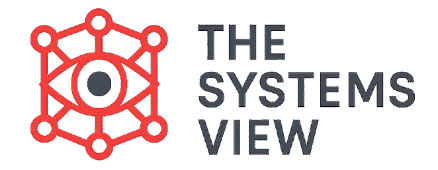To understand the world, we often look at problems one piece at a time. But this can be a mistake. Systems Thinking is a different way of looking at things. It’s a way of seeing the world as a system of interconnected parts, where everything affects everything else. Instead of just looking at the problem, we look at the whole system to understand the bigger picture.
One of the most powerful tools in Systems Thinking is the use of Systems Archetypes. These are common patterns or story plots that repeat themselves in different situations. We have already explored eight of these, like “Fixes That Fail” and “Growth and Underinvestment.” This article will give you a practical guide to using these archetypes. Instead of just reacting to problems, you will learn to see their hidden structure and find the best place to make a lasting change.
Important: Using systems archetypes is a way to look at a problem with a new lens. The goal is to move from blaming people or events to understanding the underlying patterns that are causing the problem to happen again and again.
Step 1: Identify the Problem and the Symptoms
The first step is to clearly define the problem you are facing. Don’t just focus on one event. Think about a problem that keeps happening.
- Ask yourself: What is the recurring problem? What are the symptoms I keep seeing? For example, the problem might be “We keep missing our project deadlines,” and the symptoms are “We are always working late,” “Our team is stressed,” and “We have to fix bugs after the project is done.”
Step 2: Draw the Loop Structure
Once you have identified the problem, try to draw the loops that are at play. This helps you see the cause-and-effect relationships and how they are creating a cycle. The ebook calls this the Archetype Structure. A causal loop diagram (CLD) is a great way to visualize this.
- Look for the Reinforcing Loops: What is growing in the system? Is it a good thing (a virtuous cycle) or a bad thing (a vicious cycle)? Reinforcing loops create exponential growth or collapse. For the project deadline example, a vicious cycle might be: Missed deadline -> Rushed to finish -> More bugs in the code -> More time spent on fixing bugs -> Missed deadline again.
- Look for the Balancing Loops: What is trying to keep the system stable? What actions are being taken to fix the problem? Balancing loops act as stabilizers and try to bring the system to a desired state. For the same example, a balancing loop might be: Missed deadline -> Team works overtime -> Deadline is met -> Team goes back to normal hours.
Step 3: Match Your Problem to an Archetype
Now that you have drawn the loops, you need to match your problem to one of the eight archetypes. To do this, you must look at both the Structure (the loops) and the Dynamics (the behavior over time). The dynamics show how the structure’s behavior plays out on a graph.
Structure: Look at your causal loop diagram. Does it have one reinforcing loop and one balancing loop, or two competing reinforcing loops? This is the structure.
Dynamics: Think about the behavior over time. Does the problem get worse and then better, or does it slowly get worse forever? The dynamics of each archetype are unique. Once you have looked at both the structure and the dynamics, you can match your problem to one of the eight archetypes we’ve discussed.
Here are the archetypes and how they connect to problems:
- Fixes That Fail: This happens when a quick solution gives fast relief but has a delayed side effect that makes the original problem worse.
- Shifting the Burden: You use an easy, symptomatic solution that gives short-term relief, but it makes the real, fundamental solution harder to do over time.
- Limits to Success: A system starts with great success, but that success creates a limit that eventually stops the growth.
- Drifting Goals: Instead of reaching a difficult goal, the goal is slowly lowered to match the poor performance.
- Growth and Underinvestment: A system grows, but it doesn’t invest enough to support the growth, so the quality drops and the growth stops.
- Success to the Successful: Two or more sides compete for a limited resource, and the one that gets the resource first gets more successful, leaving the other side behind.
- Escalation: Two sides compete with each other, and each action they take causes the other side to react even more strongly, creating a vicious cycle of a fight.
- Tragedy of the Commons: A shared resource is used by many people, and each person acts in their own self-interest, eventually ruining the resource for everyone.
Step 4: Find the Leverage Point
Once you have identified the archetype, you can find the leverage point. This is the one place in the system where a small change can have a big, positive effect. It is the part of the system that controls the problem.
- Fixes That Fail: The leverage point is to stop the quick fix.
- Example: For a software team that keeps releasing rushed bug fixes, the leverage point is to stop rushing and instead create a new, slower, but more careful testing process.
- Shifting the Burden: The leverage point is to find and apply the fundamental solution.
- Example: For a team that relies on overtime to meet deadlines, the leverage point is to stop relying on overtime and instead hire more people or improve the work process.
- Limits to Success: The leverage point is to identify and fix the limiting condition.
- Example: For a new phone company that can’t produce enough phones to meet demand, the leverage point is to invest in a new factory or find a way to make phones faster without losing quality.
- Drifting Goals: The leverage point is to hold to your original, high standard.
- Example: For a company with declining product quality, the leverage point is to recommit to the original quality standard and find a way to meet it, instead of lowering the goal.
- Growth and Underinvestment: The leverage point is to invest in the system that supports growth.
- Example: For a popular app with slow servers, the leverage point is to invest in better servers, even if it is expensive, to keep the quality high and the users happy.
- Success to the Successful: The leverage point is to change how resources are given out.
- Example: For two teams competing for budget, the leverage point is to create a new rule that forces resources to be shared more equally or based on need.
- Escalation: The leverage point is to find a way to break the cycle of action and reaction.
- Example: For two companies in a price war, the leverage point is for one company to stop lowering its price and try to find a way to talk to the other company.
- Tragedy of the Commons: The leverage point is to create rules or a system to manage the shared resource.
- Example: For a community with a shared pasture that is being overgrazed, the leverage point is to create a rule that limits the number of cows each farmer can put on the land.
Step 5: Implement a Lasting Solution
The final step is to put your plan into action. This will not always be easy. The quick fixes often feel good in the short term. But a lasting solution is the only way to truly solve a recurring problem.
- Communicate your plan: Explain to everyone in the system why you are changing the approach. Show them how the old way was a broken cycle.
- Be patient: A lasting solution can take time. The problem might even get worse at first before it gets better.
- Keep learning: The world is full of systems, and they are always changing. Keep looking for new loops and new archetypes, and you will become a better problem-solver over time.
Conclusion
Systems archetypes are more than just a list of patterns; they are a powerful tool for understanding and changing the world. By learning to see the loops that make up a system, you can stop being a victim of recurring problems and start becoming the person who solves them. The next time you face a challenge that keeps coming back, don’t just react to the symptoms. Instead, use these steps to identify the archetype, find the leverage point, and create a solution that works for the long run.



